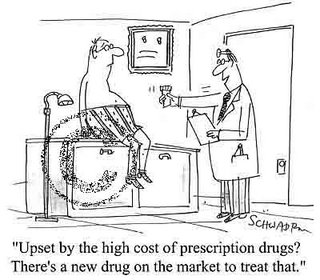
A corporation’s Board of Directors is elected by its shareholders and empowered to carry out certain fiduciary tasks—like appointing executive management and declaring dividends—spelled out in the company’s charter.
Under most companies’ Corporate Governance Guidelines, each director is expected to dedicate sufficient time, energy and attention to ensure the diligent performance of his or her duties, including by regularly attending meetings of the Board and committees of which he or she is a member.
These Codes of Conduct expressly proscribe, too, that directors must avoid conflicts of interest. Essentially, directors should not use their corporate positions for individual personal advantages.
While the Codes do not attempt to describe all possible conflicts of interest that could develop, the following are examples of conflicts of interest:
- Company Loans – receiving loans or guarantees of obligations as a result of one's position as a Director;
- Third Party Relationships – engaging in conduct or activity that improperly interferes with the Company's existing or prospective business relations with a third party;
- Personal Gains – accepting bribes, kickbacks or any other improper payments for services relating to the conduct of the business of the Company;
- Gifts and/or Gratuities – accepting, or having a member of a Director's immediate family accept, a gift from persons or entities that deal with the Company, in cases where the gift is being made in order to influence the Directors' actions as a member of the Board, or where acceptance of the gift could otherwise reasonably create the appearance of a conflict of interest; and
- Personal Use of Corporate Assets – using Company assets, labor or information for personal use except as approved by the Chairman of the Governance and Nominating Committee, or as part of a compensation or expense reimbursement program available to all Directors.
The 10Q Detective has found one conflict of interest that is remarkable in its absence from Corporate Governance policies that we have examined—that of time. Granted, most Codes spell out or infer that “self-dealing,” in which public and private interests collide, is to be avoided; but aside from looking at ‘time’ as a quantifiable measure (by regular attendance at board or subcommittee meetings), few corporations bother to exercise vigilance in declaring any apparent or real personal conflict in a director’s time when he or she is serving on the boards of many a company (save for direct competitors) and/or have private interests, too.
How can these ‘policy managers’—whatever their breadth of experience or prior industry successes—be expected to exercise, in the performance of their duties, the degree of care, diligence and skill necessary to be effective stewards of stockholders’ interests?
On August 1, 2006, Starwood Hotels & Resorts Worldwide, Inc. (HOT-$63.11), one of the world's largest hotel and leisure companies, announced the election of Adam M. Aron, 51, the former Chairman and CEO of Vail Resorts (MTN-$41.71) to its Board of Directors.
"There's not a more innovative leader in this industry than Adam," said Steven J. Heyer, Starwood's Chief Executive Officer. "As we continue to transform our company, unlocking the substantial power of our brands and implementing an exciting strategy that pushes traditional boundaries, Adam's insight and instinct will be invaluable."
The 10Q Detective is not questioning Aron’s competence. “Adam is an icon in the travel industry, well respected and admired by those who have worked with him during his 27 years in the industry," said Bruce Duncan, Chairman of Starwood's Board. "Credited with many industry 'firsts' including helping to create airline and hotel frequency programs, Adam is a formidable addition to our board."
And looking at Aron’s recent compensation and severance packages from Vail Resorts, from which he retired in June 2006, he certainly is not in need of disposable income:
- As of April 2005, Mr. Aron owned more than $11.0 million in Vail-related real-estate holdings;
- As part of his Separation Agreement, Mr. Aron was granted more than $2.65 million in accrued severance; and,
- In his ten years at the helm of Vail Resorts, Aron accumulated more than 210,000 shares of company stock, worth an estimated $8.82 million. Also, he retains an additional 600,000 (+) in-the-money vested options, worth an estimated $25.2 million.
Mr. Aron epitomizes our time conflict argument; he is an obviously successful businessman with too little time to commit to all of his interests.
Are shareholders best served when—in addition to serving on the Board at Starwood’s Hotel—he is currently Vice Chairman of the Travel Industry Association of America and is expected to be its Chairman in 2008?
We doubt that he accepted the board position at Starwood for the 250,000 Starwood Preferred Guest Points and eighteen free nights per year in the Company’s hotels given annually to each director.
Did we mention, too, that Mr. Aron serves on the Board of Directors of the floral provider FTD Group (FTD-$17.48) and Rewards Network (IRN-$5.45), a leading provider of marketing services and loyalty programs to the restaurant industry?
If any of our readers need more telling attestation, consider this fact: Mr. Aron just founded Miami-based World Leisure Partners (in the spring of 2006) to serve as a personal consultancy on issues related to leisure-related and/or luxury products and services, including real estate, as well as consumer marketing issues. Potential clients will need to know that he has more than just a titular role to play if this venture is to succeed.
Doing a GOOGLE search, we uncovered 1.16 million articles referencing ‘CEO/ PAY/ EXCESSES.’ As Boards of directors are responsible for setting CEO pay, we wonder how many times directors have awarded compensation packages that go well beyond what is required to attract and retain qualified executives because the directors were too busy with other projects?
Given that executive pay excesses often come at the expense of shareholder value, stockholders ought to be asking just one question: When is Mr. Aron going to find the time to exercise the ski privileges for the 2006/2007 ski season (that he had written into his Severance Agreement)?
Editor David J. Phillips holds no financial interest in any of the stocks mentioned in this article. The 10Q Detective has a full disclosure policy.








